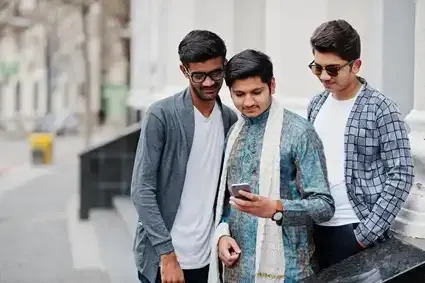Shopping cart
Your cart empty!
Terms of use dolor sit amet consectetur, adipisicing elit. Recusandae provident ullam aperiam quo ad non corrupti sit vel quam repellat ipsa quod sed, repellendus adipisci, ducimus ea modi odio assumenda.
Lorem ipsum dolor sit amet consectetur adipisicing elit. Sequi, cum esse possimus officiis amet ea voluptatibus libero! Dolorum assumenda esse, deserunt ipsum ad iusto! Praesentium error nobis tenetur at, quis nostrum facere excepturi architecto totam.
Lorem ipsum dolor sit amet consectetur adipisicing elit. Inventore, soluta alias eaque modi ipsum sint iusto fugiat vero velit rerum.
Sequi, cum esse possimus officiis amet ea voluptatibus libero! Dolorum assumenda esse, deserunt ipsum ad iusto! Praesentium error nobis tenetur at, quis nostrum facere excepturi architecto totam.
Lorem ipsum dolor sit amet consectetur adipisicing elit. Inventore, soluta alias eaque modi ipsum sint iusto fugiat vero velit rerum.
Dolor sit amet consectetur adipisicing elit. Sequi, cum esse possimus officiis amet ea voluptatibus libero! Dolorum assumenda esse, deserunt ipsum ad iusto! Praesentium error nobis tenetur at, quis nostrum facere excepturi architecto totam.
Lorem ipsum dolor sit amet consectetur adipisicing elit. Inventore, soluta alias eaque modi ipsum sint iusto fugiat vero velit rerum.
Sit amet consectetur adipisicing elit. Sequi, cum esse possimus officiis amet ea voluptatibus libero! Dolorum assumenda esse, deserunt ipsum ad iusto! Praesentium error nobis tenetur at, quis nostrum facere excepturi architecto totam.
Lorem ipsum dolor sit amet consectetur adipisicing elit. Inventore, soluta alias eaque modi ipsum sint iusto fugiat vero velit rerum.
Do you agree to our terms? Sign up

The digital landscape has shifted, and the stage no longer belongs to politicians, professors, or newsroom anchors. Instead, Gen Z and influencers are driving real-time discussions through reels, podcasts, and short-form videos that dominate social media feeds. What once unfolded in tea stalls or college canteens is now playing out on Instagram, YouTube, and new-age apps.
For many from earlier generations, political speeches and newspaper headlines shaped public discourse. Harishankar Sharma, 63, recalls the 1980s when “Indira Gandhi’s speeches turned tea shops into mini-parliaments.” But for today’s youth, that culture has faded. The headline is no longer sacred, and the front page no longer dictates the narrative.
Gen Z consumes information differently. Their feed is their newsroom, reels serve as editorials, and podcasts often carry more influence than a politician’s rally.
“Influencers feel real and relatable, while institutions seem rigid and outdated,” says Anshika, 22. Unlike traditional institutions, creators share vulnerabilities, personal failures, and raw emotions. This transparency fosters trust, making audiences feel like they’re engaging with a friend, not a distant authority.
Shivang, 23, a young journalist, highlights that Gen Z isn’t blindly influenced. “We fact-check, research, and cross-check. But in smaller towns, old prejudices make people more vulnerable to misinformation.” This balance between curiosity and skepticism is why influencer-driven content resonates.
Ankita Dogra, 24, adds: “Creators build communities, reply to comments, and speak our language. Institutions don’t. That’s why credibility now lies in experience and transparency rather than hierarchy.”
From lifestyle choices to career planning, Gen Z looks toward influencers who reveal their daily struggles and achievements. The constant, interactive presence of creators makes them more influential than brands or institutions that communicate formally and occasionally.
Dr. Ashish Bansal, Consultant Psychiatrist and co-founder of House of Aesthetics, observes, “Global surveys show Gen Z is skeptical of governments, corporates, and policies. They rely more on influencers because they appear authentic and relatable.”
But this credibility comes with risks. Scandals involving fake health products, crypto scams, or misleading endorsements highlight how fragile influencer trust can be.
At the iPhone 17 launch, influencers outnumbered journalists, signaling a shift in how even global giants communicate. Apple’s story was told not through press releases but through reels.
Dr. Aparna Sharma, Dean at Noida International University, calls it a “reordering of credibility.” Institutions still hold weight in education, healthcare, and governance, but when it comes to lifestyle and consumer decisions, creators dominate.
However, Manya, 21, working in PR, cautions: “Trusting influencers blindly is risky. Audiences must remain alert because not every creator is accountable.”
Institutions release research papers and court verdicts that shape society, but they lack interactivity. Influencers, on the other hand, run polls, reply to comments, and even livestream daily life. This two-way engagement fosters community-driven credibility.
Professor Mohd Owais Khan from VIT notes that many young people see influencer culture as aspirational – offering fame, money, and relevance. But as credibility shifts, questions arise: Can society rely too much on influencers? Could a misstep destabilize this new system of trust?
Uttkarsha, 23, from Jaipur summarizes the dilemma: “We still look to institutions for legitimacy in some areas, but influencers give us authenticity and connection. It’s not about hierarchy anymore, but about lived experience.”
For now, the campus debates and digital feeds make one thing clear: Influencers have moved to the center stage, while institutions are slowly being pushed into the background.
9
Published: Sep 19, 2025